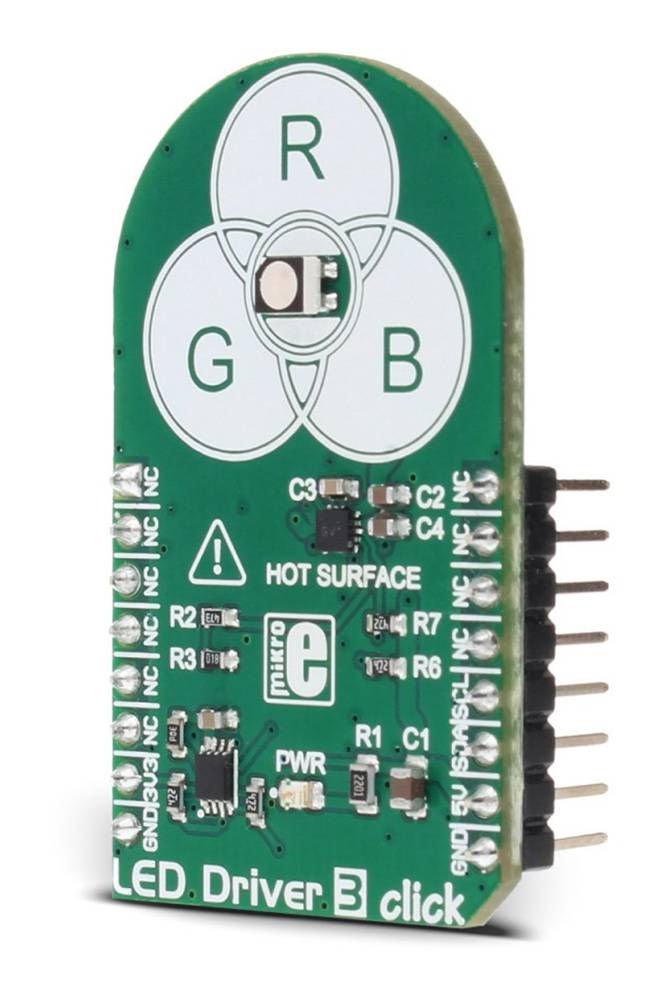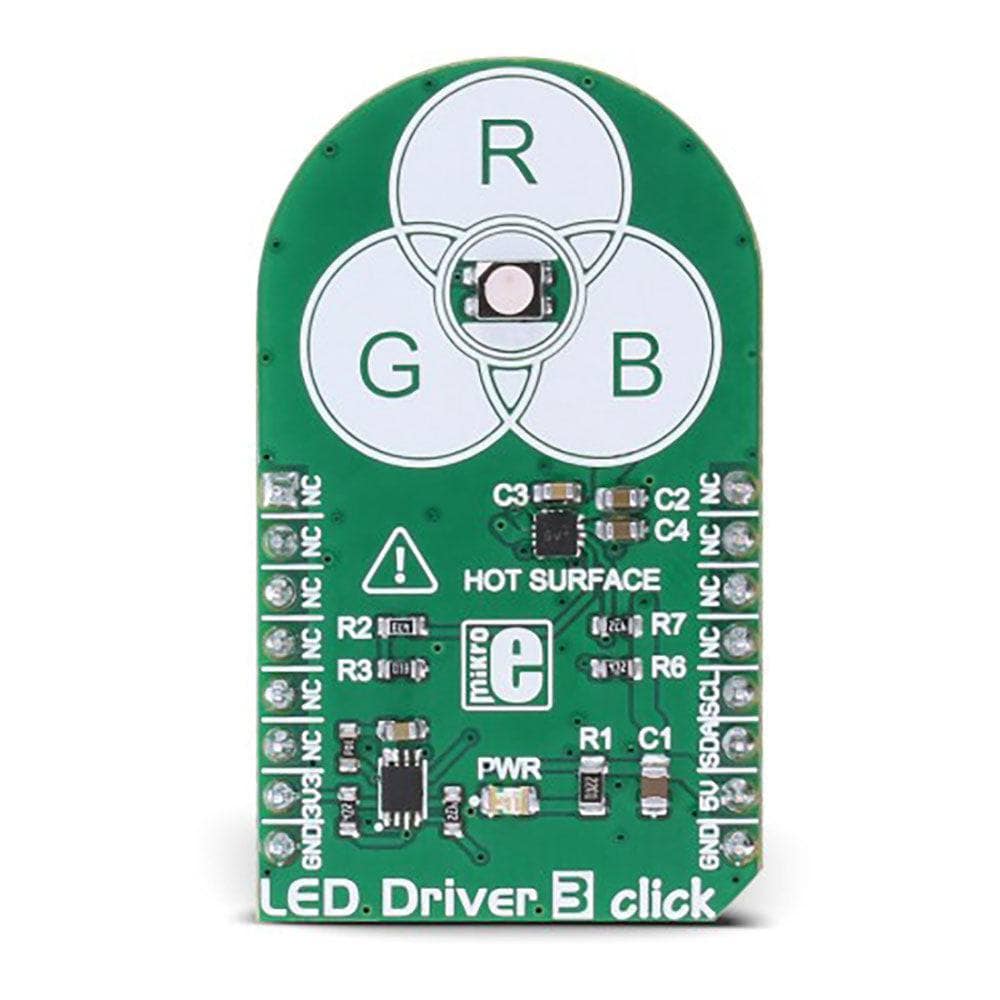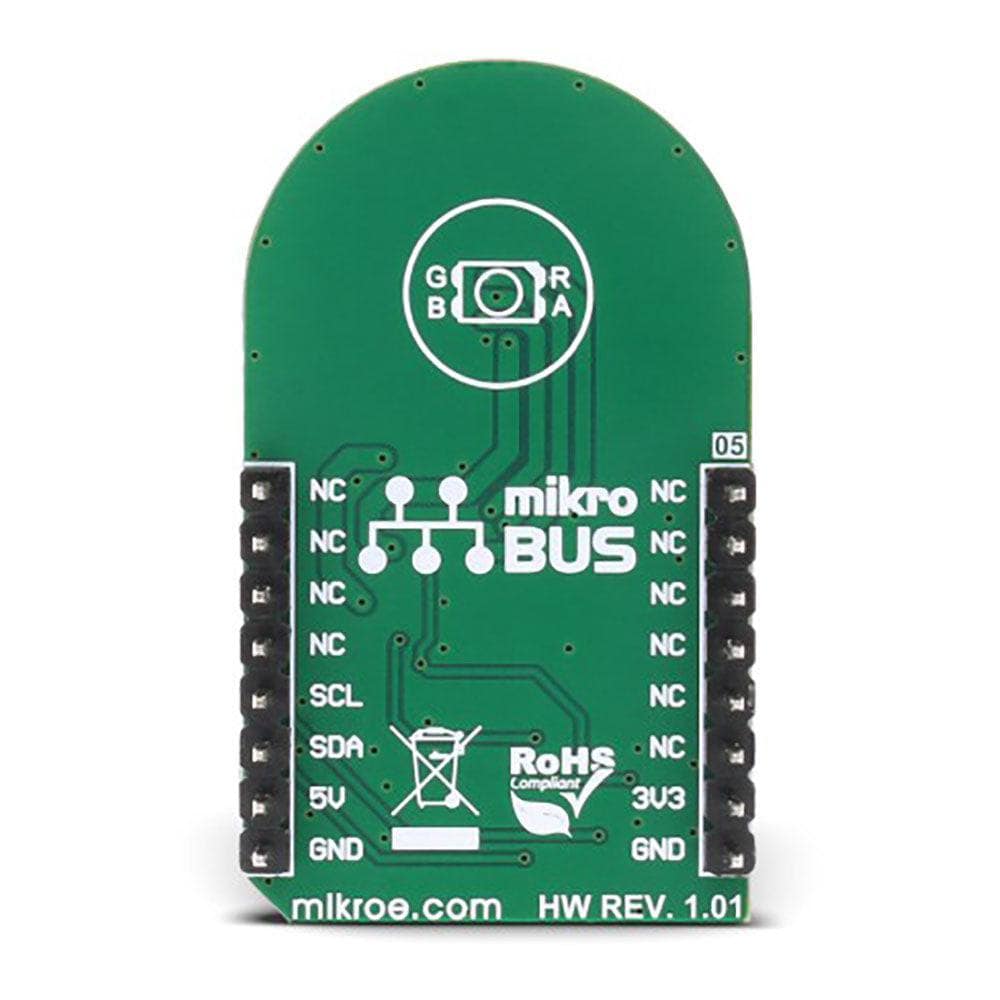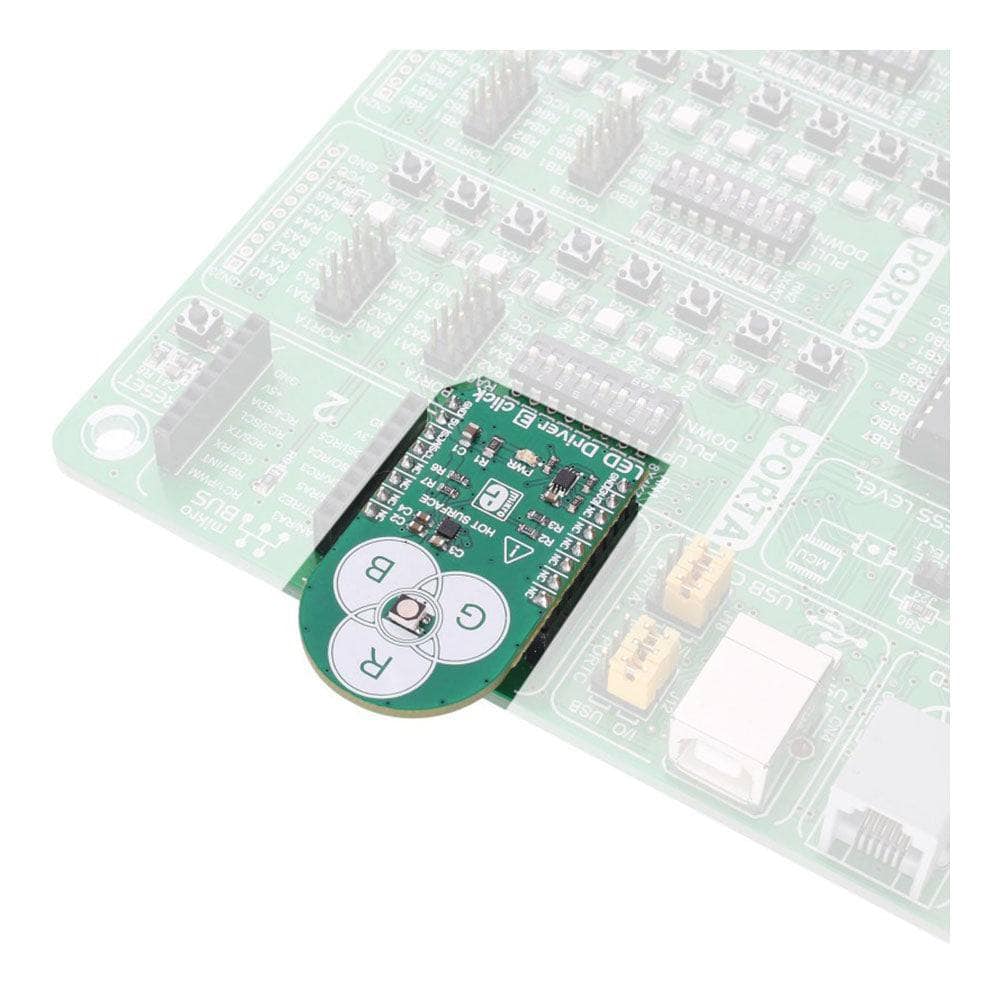



Overview
The LED Driver 3 Click Board™ is an RGB LED driver, capable of driving RGB LEDs with up to 30mA per segment, via the digital I2C interface. It comes with an RGB LED on-board, and is capable of displaying a palette of 32768 colours. It features an integrated circuit with three independent LED driver sections and a programmable gradual dimming control, which gives a smooth dimming effect. Heat dissipation is taken to the minimum, due to a fact that the used driver IC works with up to 94% efficiency.
Downloads
Le LED Driver 3 Click Board™ est un driver LED RGB, capable de piloter des LED RGB jusqu'à 30 mA par segment, via l'interface numérique I2C. Il est équipé d'une LED RGB intégrée et est capable d'afficher une palette de 32 768 couleurs. Il dispose d'un circuit intégré avec trois sections de driver LED indépendantes et d'un contrôle de gradation progressif programmable, qui donne un effet de gradation fluide. La dissipation de chaleur est réduite au minimum, du fait que le circuit intégré de driver utilisé fonctionne avec une efficacité allant jusqu'à 94 %.
| General Information | |
|---|---|
Part Number (SKU) |
MIKROE-2950
|
Manufacturer |
|
| Physical and Mechanical | |
Weight |
0.021 kg
|
| Other | |
Country of Origin |
|
HS Code Customs Tariff code
|
|
EAN |
8606018712588
|
Warranty |
|
Frequently Asked Questions
Have a Question?
Be the first to ask a question about this.




